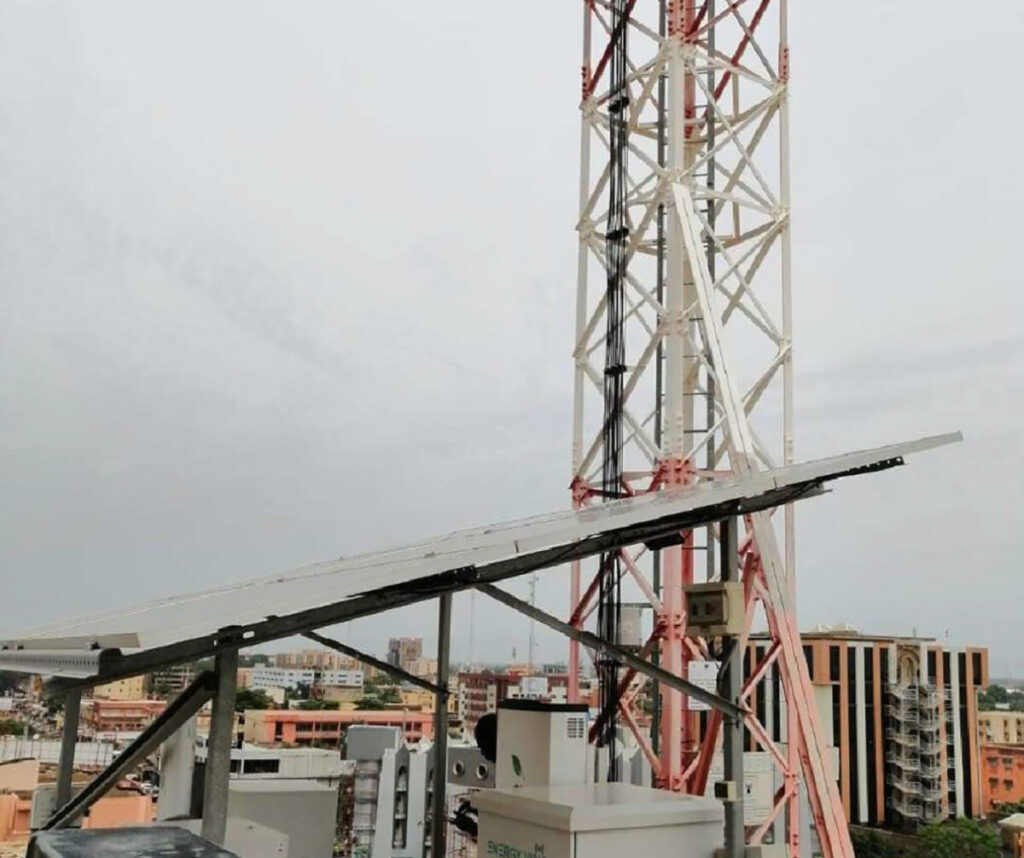A PV-Micro-Grid near a basic treatment station
Image: Université Joseph Ki-Zerbo, Solar Compass, CC by 4.0
A team of researchers from Université Joseph Ki-Zerbo in Burkina Faso has investigated the performance of PV systems near Base Transceiver Stations (BTS) and has discovered that electromagnetic fields can influence the performance of the solar salroves, depending on their strength.
The scientists explained that the presence of the electromagnetic wave in the BTS can cause a power increase in solar modules, although this effect may not be strong enough to influence the energy production of the system.
“However, if the electric field is too strong, part of the flow of heat generates through the Joule effect. This can break down the quality of the PN junction. So it is better to reduce the PV -cell exhibition to a strong electromagnetic field,” they said.
The research team has recommended to implement the PV system at a “safe” distance of the BTS and to use solar modules with high levels of on-board access, which are more resistant to electromagnetic field effects and are less susceptible to degradation (member).
To test their approach, the academics have carried out and identified a series of simulations what they described as the optimum drilling range that improves the resistance to solar module against electromagnetic field damage.
Drilling concentration in solar cells is the key To form the PN junction required for the conversion of solar energy. The concentration of drill in the P-type layer is usually 1021 cm–3. The researchers discovered that, with a drilling concentration of 1017 cm–3The power in the module drops while the voltage sees a slight increase.
“This can be explained by the capacity of the PV cell to show better resistance to the EMF effects at 1017 cm–3. , “They explained further.” This observation is a confirmation that the output -maximal electrical power is found at this doping level, while the PV cell is retained under stable multispectral solar lighting of Zonne -Zonne energy to reduce the lid effects. “
The team said that the findings can help with the project developers and manufacturers of solar module “Easy” PV systems to integrate into BTS infrastructure.
The findings can be found in the newspaper “Resistance from crystalline silicon photovoltaic cell to the electromagnetic field effects“Published in Solar compass.
This content is protected by copyright and may not be reused. If you want to work with us and reuse part of our content, please contact: editors@pv-magazine.com.
Popular content


